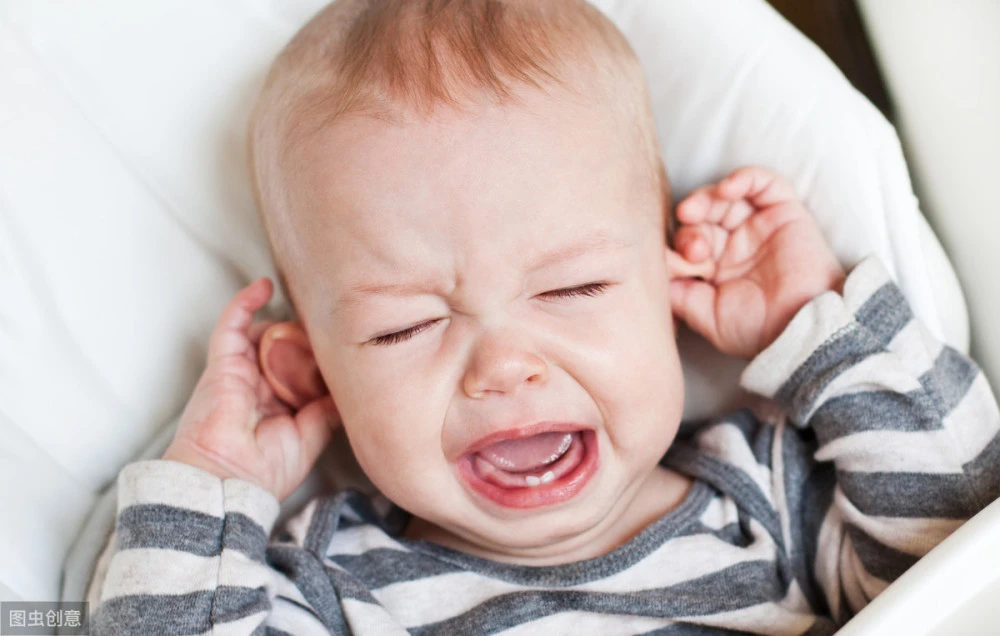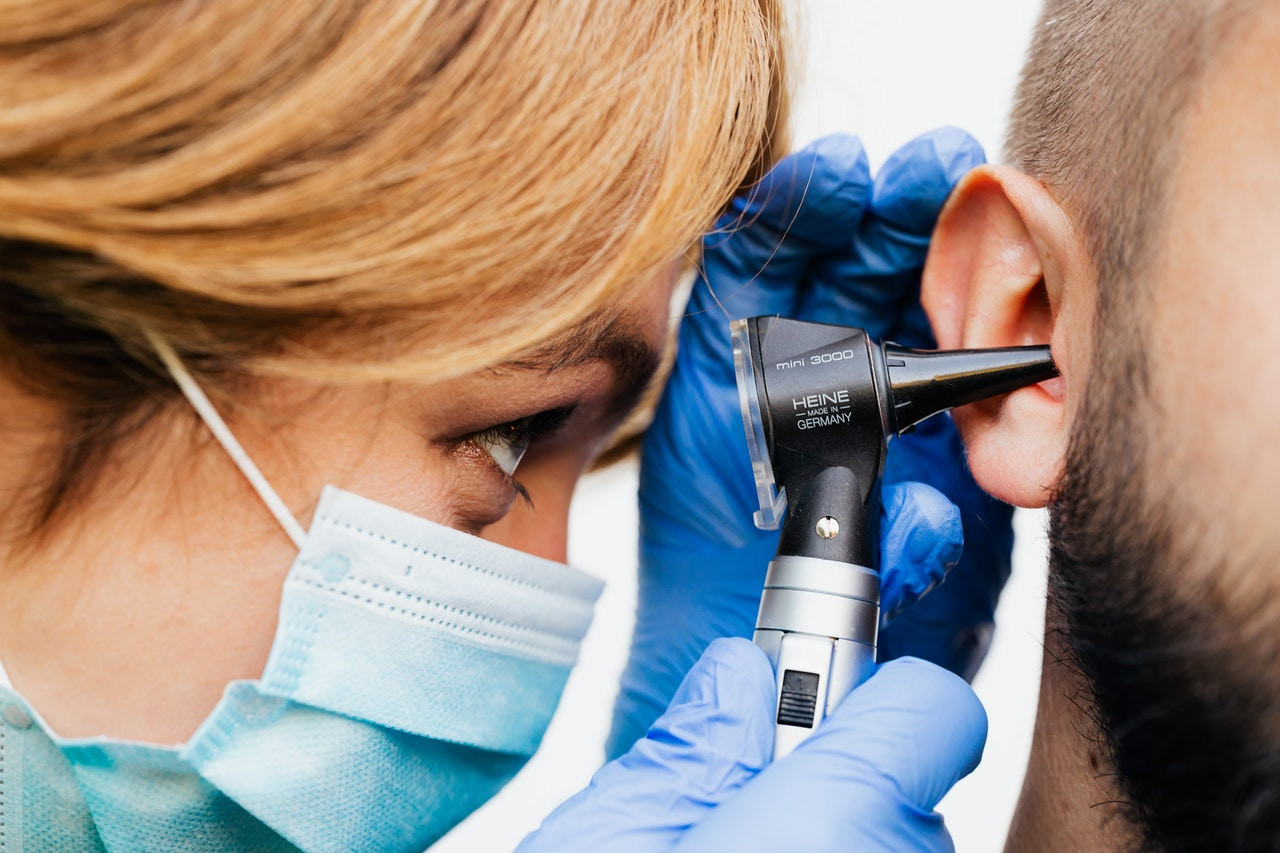Definisi
Otitis media supuratif kronis atau disingkat dengan OMSK merupakan kondisi di mana membran timpani berlubang (perforasi) disertai dengan keluarnya cairan secara terus menerus dari telinga bagian tengah. Kondisi ini biasanya terjadi lebih dari 6 minggu.
OMSK dapat terjadi dengan atau tanpa disertai dengan kolesteatoma. Kolesteatoma merupakan pertumbuhan secara berlebihan pada sel kulit pada telinga bagian tengah.
OMSK secara garis besar dibagi menjadi dua kelompok, yaitu OMSK tipe aman dan tipe bahaya. Tipe aman disebut juga sebagai tipe tanpa kolesteatoma. Pada tipe aman, robekan cenderung dialami pada bagian tengah gendang telinga dan lebih sedikit menimbulkan komplikasi berbahaya.
OMSK tipe bahaya disebut juga dengan OMSK dengan kolesteatoma. Pada tipe ini, robekan pada gendang telinga dapat terjadi hingga mengenai tulang yang menyusun dinding saluran telinga bagian luar. Kondisi ini disertai dengan adanya pertumbuhan sel kulit pada telinga bagian tengah yang terjadi secara berlebihan. Hal ini bersifat merusak dan cenderung menimbulkan komplikasi berbahaya pada penderitanya.
Berdasarkan cairan yang keluar dari telinga, OMSK dikelompokan dalam dua tipe, yaitu OMSK tipe aktif dan OMSK tipe tenang. Pada OMSK tipe aktif, cairan kental yang dapat berupa nanah dan berbau akan keluar secara terus menerus dari lubang robekan gendang telinga. Sedangkan pada OMSK tipe tenang, saluran telinga cenderung kering.
Penyebab
Meskipun infeksi virus merupakan penyebab tersering terjadinya otitis media, pada anak-anak, bakteri menjadi penyebab paling sering terhadap terjadinya otitis media supuratif kronis. Beberapa jenis bakteri yang paling sering ditemukan sebagai penyebab OMSK berupa Staphylococcus aureus atau MRSA, Pseudomonas aeruginosa, Proteus spp, Klebsiella spp, Bacteroides spp, dan Fusobacterium spp. Pada orang yang memiliki gangguan sistem imun sehingga memiliki sistem imun yang lebih lemah, beberapa jenis jamur seperti Aspergillus spp dan Candida spp dapat menjadi penyebab terjadinya OMSK. Pada daerah dengan angka kejadian tuberkulosis yang tinggi, kasus OMSK sering kali ditemukan karena adanya infeksi tuberkulosis.
Kuman-kuman penyebab OMSK tersebut akan masuk ke permukaan telinga tengah melalui saluran eksternal. Saluran eksternal tersebut dapat berupa robekan pada gendang telinga atau pemasangan pipa ventilasi pada telinga. Kuman yang masuk kemudian akan memicu munculnya reaksi peradangan pada telinga bagian tengah yang terjadi dalam jangka waktu yang lama (lebih dari 6 minggu).
Faktor Risiko
Terdapat beberapa faktor yang memiliki potensi untuk meningkatkan kemungkinan terjadinya otitis media supuratif kronis. Beberapa diantaranya berupa:
- Infeksi telinga seperti otitis media akut (OMA) yang tidak mendapatkan pengobatan yang tepat atau terlambat ditangani, kebersihan buruk, atau adanya gangguan sistem imun pada penderitanya dapat berkembang menjadi otitis media supuratif kronis atau OMSK.
- Gendang telinga atau membran timpani mengalami trauma hingga robek berukuran cukup luas.
Gejala
Gejala yang dapat muncul pada OMSK berupa:
- Gangguan pendengaran pada telinga yang terkena,
- Nyeri pada telinga yang terkena,
- Keluarnya cairan dari dalam telinga. Cairan dapat kental, seperti keju, hingga berwarna bening,
- Jika disertai adanya gejala demam dan vertigo atau pusing berputar, segera laporkan ke dokter Anda. Hal ini dapat merupakan tanda bahwa infeksi telinga telah menyebar menuju ke bagian dalam kepala.
Diagnosis
Dokter Anda akan menanyakan beberapa penyakit yang berkaitan dengan keluhan yang Anda rasakan. Dokter Anda akan menanyakan apakah terdapat riwayat keluarnya cairan dari telinga selama durasi waktu tertentu, adanya riwayat infeksi telinga berulang, adanya riwayat pemasangan pipa ventilasi pada telinga.
Jika berdasarkan anamnesis diketahui bahwa riwayat OMSK telah terjadi secara persisten meskipun telah dilakukan perawatan medis yang tepat, maka dokter Anda akan mempertimbangkan terjadinya kolesteatoma.
Pemeriksaan Fisik
Pada pemeriksaan fisik, dokter Anda akan melakukan inspeksi pada daun telinga dan bagian belakang telinga. Dokter Anda juga akan melakukan pemeriksaan dengan menggunakan alat yang Bernama Otoskopi. Alat ini digunakan untuk melihat adanya kelainan di dalam saluran telinga Anda.
Pemeriksaan Penunjang
Untuk menegakkan diagnosis, dokter mungkin Anda akan menyarankan beberapa pemeriksaan penunjang berupa:
- Pengambilan sampel dari cairan yang keluar dari telinga Anda. Sampel ini kemudian diambil untuk diperiksa di laboratorium. Tujuan dilakukan pemeriksaan ini adalah untuk mengetahui jenis kuman penyebab terjadinya OMSK.
- Tes audiogram. pemeriksaan ini untuk mengetahui jenis gangguan pendengaran yang Anda alami. Umumnya, kondisi ini akan menyebabkan gangguan pendengaran berupa tuli konduktif. Namun, dapat juga terjadi gangguan pendengaran campuran atau sensorineural.
- CT scan, MRI. Pada kasus OMSK yang tidak merespon terhadap pengobatan secara medis, pemeriksaan CT scan atau MRI dapat sangat berguna. Dengan menggunakan CT scan atau MRI, dokter Anda dapat melihat kelainan serta komplikasi yang terjadi pada telinga Anda.
Tata Laksana
Jika dokter Anda mendiagnosis Anda dengan otitis media supuratif kronis atau OMSK, dokter Anda akan memberikan beberapa pengobatan sesuai tipe OMSK yang Anda alami. Pengobatan pada OMSK cenderung memberikan respon lebih baik pada jenis pengobatan yang dioleskan atau diteteskan langsung pada permukaan telinga atau pengobatan topikal dibandingkan dengan pengobatan yang dilakukan dengan menggunakan obat minum agar obat beredar ke seluruh tubuh atau sistemik.
Pengobatan secara topikal terdiri atas 3 bagian penting, yaitu pemilihan obat tetes antibiotik telinga yang sesuai, pembersihan kotoran telinga dengan cuci telinga menggunakan larutan H2O2 3% secara teratur, dan mengontrol pertumbuhan berlebihan pada jaringan di telinga. Pengobatan secara sistemik hanya dilakukan jika pengobatan secara topikal tidak memberikan respon yang baik.
Tindakan pembedahan akan dipertimbangkan oleh dokter Anda jika OMSK yang Anda alami tidak memberikan respon pada pengobatan secara topikal maupun sistemik. Tindakan pembedahan dilakukan untuk mencegah terjadinya komplikasi serta mempertahankan pendengaran yang masih ada.
Komplikasi
Infeksi pada telinga berupa otitis media supuratif kronis dapat menjalar menuju ke dalam rongga kepala. Jika disertai adanya gejala demam dan vertigo atau pusing berputar, segera laporkan ke dokter Anda. Hal ini dapat merupakan tanda bahwa infeksi telinga telah menyebar menuju ke bagian dalam kepala. Infeksi pada rongga bagian dalam kepala tersebut dapat menyebabkan munculnya penyakit seperti abses epidural, subdural, atau abses otak. Abses didefinisikan sebagai penumpukan nanah pada suatu lokasi yang disebabkan oleh infeksi bakteri.
Selain menyebabkan meningkatkan kemungkinan terjadinya infeksi pada bagian dalam rongga kepala, OMSK dapat menyebabkan terjadinya hilangnya kemampuan pendengaran pada penderitanya. Gangguan pendengaran yang muncul dapat bersifat konduktif, sensorineural dan campuran. Kondisi ini dapat berlangsung sementara. Pada beberapa kasus, hilangnya kemampuan pendengaran atau tuli yang ditimbulkan sebagai komplikasi OMSK bersifat permanen atau tidak dapat hilang.
Pada anak, hilangnya fungsi pendengaran ini dapat menyebabkan keterlambatan perkembangan dalam berbicara dan berbahasa serta gangguan perilaku pada anak.
Pencegahan
Jika Anda mengalami infeksi telinga, berobat rutin ke dokter dan patuhi pengobatannya hingga tuntas. Pengobatan yang baik dan dilakukan hingga tuntas dapat mencegah terjadinya otitis media supuratif kronis dikemudian hari.
Kapan Harus ke Dokter?
Segera ke dokter jika Anda merasakan adanya gejala-gejala di atas. Jika Anda merasakan adanya gejala dan tanda infeksi telinga seperti telinga terasa nyeri, gangguan pendengaran, atau keluar cairan dari dalam telinga, segera periksakan ke dokter Anda agar segera mendapatkan pengobatan yang tepat dan cepat.
Mau tahu informasi seputar penyakit lainnya, cek di sini ya!
- dr Anita Larasati Priyono
Rosario DC, Mendez MD. Chronic Suppurative Otitis. [Updated 2022 Jan 4]. In: StatPearls [Internet]. Treasure Island (FL): StatPearls Publishing; 2022 Jan-. Available from: https://www.ncbi.nlm.nih.gov/books/NBK554592/
Medscape.com. (2021, 12 Januari). Chronic Suppurative Otitis Media: Practice Essentials, Anatomy, Pathophysiology. Diakses pada 9 Maret 2022, dari https://emedicine.medscape.com/article/859501-overview
Morris, P. (2013). Clinical Evidence Handbook : Chronic Suppurative Otitis Media. American Family Physician, 88(10), 694–696.










